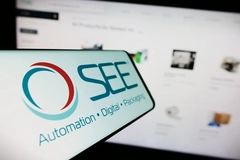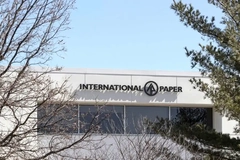Tetra Pak acquires carbon and food waste-cutting eBeam sterilization operations from Comet

11 Nov 2020 --- Tetra Pak is acquiring electron beam (eBeam) operations from Swiss technology company Comet. The eBeam sterilization technology uses focused, accelerated electrons to kill microorganisms as it runs through filling machines, boosting production capacity and cutting food waste and carbon.
“In the traditional production process, used hydrogen peroxide would need to be filtered out from the water used in the production process; whereas the eBeam removes this need to ‘filter’ used hydrogen peroxide,” Laurence Mott, executive vice president of development and engineering at Tetra Pak, tells PackagingInsights.
The Tetra Pak E3/Speed Hyper filling machine for aseptic packaging of liquid food combined with eBeam technology facilitates more water recycling than the Tetra Pak A3 carton filling machine using conventional hydrogen peroxide.
Using less chemical sterilant also leads to reduced water treatment and energy consumption while maintaining the same footprint of Tetra Pak’s equipment.
“With our new partnership, we are integrating the development and manufacturing of the eBeam in-house, which will enable us to further optimize the technology for packaging and enhance our low-carbon circular-economy packaging equipment portfolio. So, the sky’s the limit,” muses Mott.
.jpg) Tetra Pak E3 Speed/Hyper with eBeam technology can boost production capacity by 60%.Reaching 40,000 packs per hour
Tetra Pak E3 Speed/Hyper with eBeam technology can boost production capacity by 60%.Reaching 40,000 packs per hour
The eBeam lamps utilize low energy electron beams – below 300 kV – to affect surface molecules. Tuned to a specific energy, the electrons interacting with the object can inactivate and sterilize bacteria or transform a liquid state to a solid – applicable in the case of curing inks, for instance.
The technology boosts production capacity by up to 60 percent. According to Tetra Pak, it also lowers energy consumption by up to a third and cuts food waste.
“Currently, Tetra Pak has around 50 filling lines with eBeam operational on the market with an improved performance each year,” Mott details.
“The capacity of the eBeam filling lines for our current customers are running at 15,000 packs per hour and our E3/Speed Hyper lines will reach 40,000 packs per hour.”
In contrast, the Tetra Pak A3 Speed with the traditional use of hydrogen peroxide can reach up to 24,000 portion packs per hour filling portion packages.The opportunities with eBeam technology are “boundless,” says Mott.
Tetra Pak will continue developing and producing eBeam devices at the current site in Flamatt, Switzerland, leasing space from Comet.
Researching further applications
Tetra Pak launched the world’s first filling machine using a low voltage electron beam to sterilize packaging material, a technology developed in the first collaboration with Comet.
Responding to what collaborative moves with Comet are still in store, Mott says the “opportunities are boundless.”
eBeam has established applications in the printing, food and sterilization industries, but this is “only the beginning,” envisions Comet.
“We know there are many applications yet to be discovered and we are committed to working with our partners and customers to bring eBeam innovation to a wider range of industry verticals.”
By Anni Schleicher











